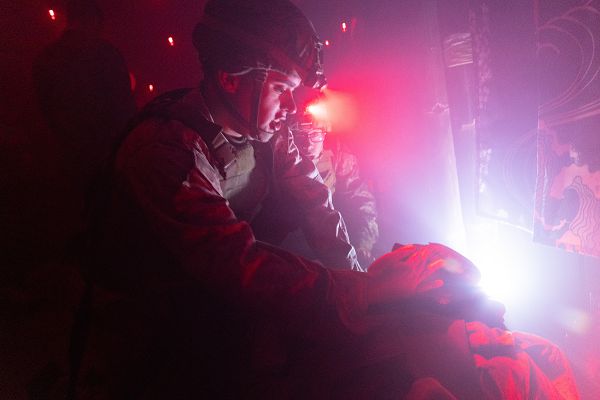
Camp Hansen, Okinawa, Japan. (January 3, 2024): In the movies, a wounded soldier cries out “medic” hoping help can reach them before it is too late. In today’s military, EVERY combatant is equipped with basic emergency medical skills via the Combat Life Saver Course (CLS). In this photo by Corporal William Wallace, PFC Johnathan Hernandez, an inventory management specialist with 5th Air Naval Gunfire Liaison Company, III Marine Expeditionary Force Information Group, checks a simulated casualty for trauma during the CLS course’s final exam. The aim of the program is to eliminate preventable combat deaths by equipping every servicemember with the essentials they need to stabilize a patient until a medic arrives.
Officially called Tactical Combat Casualty Care, the 40-hour course teaches the advanced skills needed to render effective care to casualties in the absence of a corpsman. The course is designed around the three stages of intervention: Care Under Fire, Tactical Field Care, and Casualty Evacuation.
Care Under Fire is just like it sounds, emergency treatment delivered while still under enemy fire. These interventions include emergency tourniquet use, blood control due to gunshots, explosions, or other trauma, securing an airway, and providing wound care.
Tactical Field Care involves steps rendered by first responders or prehospital medical personnel (primarily medics, corpsman, and pararescuemen) while still in the tactical environment. These levels of care are covered by the acronym MARCH which stands for:
Massive hemorrhaging controlled using tourniquets, hemostatic dressings, and pressure dressings. Airway management to clear obstructions and Respiratory care to ensure a patient is getting sufficient oxygen. Circulation is managed through intravenous fluids and, finally, steps are taken to prevent Hypothermia. The CLS also teaches students how to communicate with evacuation platforms to call for ground or air medical support and how to package a casualty for transport. The training culminates in a 50-question written exam and a hands-on practical test where students need a 70% minimum score to pass.
Research has shown that these early interventions have substantially improved a casualty’s chance of survival. In a 2006 study comparing fatality rates from 1941 to 2005, survival rates improved from 19% during World War II, 16% in Vietnam, to an all-time low of just 9% during Operation Iraqi Freedom and Operation Enduring Freedom.
Today, every servicemember can be assured of receiving immediate lifesaving medical attention thanks to the Combat Life Saver course.


